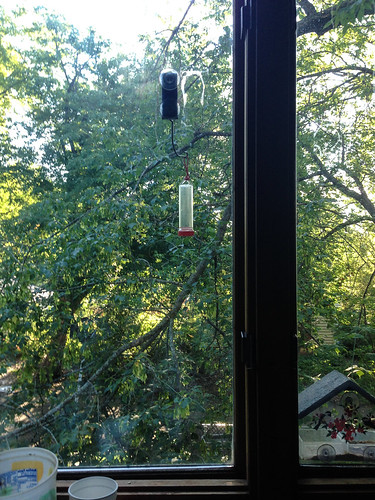 |
| View from my desk |
 |
| View from the open window |
On September 1, for example, while other people were out celebrating Labor Day and I was indoors feeling sorry for myself, my little chickadee with the damaged foot, missing all its front toes, turned up. This is the same bird that had the deformed bill, with the upper mandible way longer than it should have been. Now it’s using the foot fairly gracefully. It got through this summer’s molt perfectly, so it’s in beautiful plumage right now, too. I was delighted to be able to photograph it right out my window, and it posed for some very nice pictures.
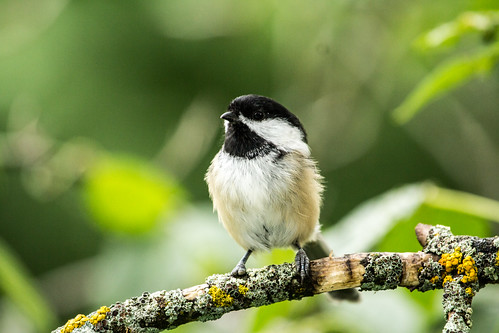 |
| My little chickadee with the missing toes |
During migration, one of the bonuses of seeing chickadees is finding the birds that move about with them. Right through my window, I spotted Black-and-white, Nashville, and Magnolia Warblers, American Redstart, and Red-eyed Vireos.
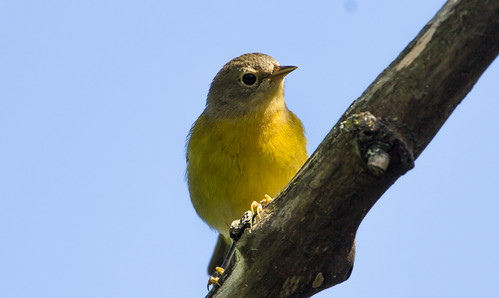 |
| Nashville Warbler |
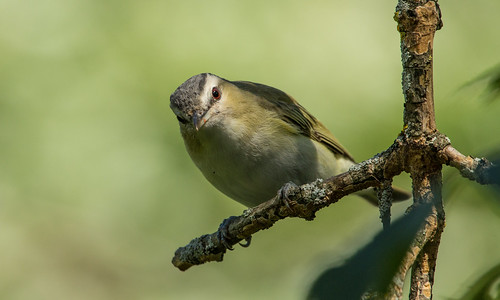 |
| Red-eyed Vireo |
And with so many birds right there, I knew there’d be more in other trees, so I headed out to the backyard to add Northern Parula, Tennesee, and Chestnut-sided Warblers, along with a Least Flycatcher and House Wren, and more Magnolia Warblers, redstarts and vireos.
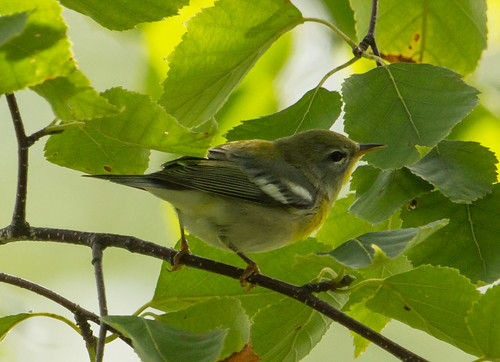 |
| Northern Parula |
 |
| Chestnut-sided Warbler |
 |
| Magnolia Warbler |
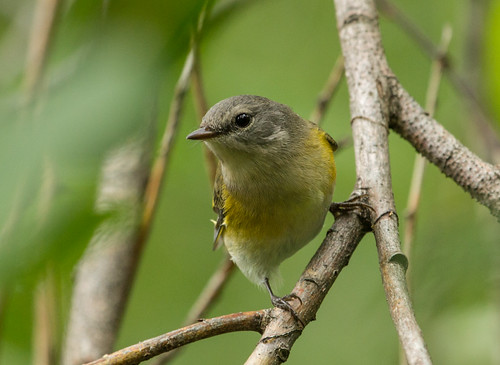 |
| American Redstart |
These are all migrants who don’t know their way around the neighborhood, but they were all hatched in Canada or further north in Minnesota, and know full well that chickadees know all the best places to find food or hide out from predators, and chickadees welcome any little birds that tag along with their sociable little flocks. It’s always a good idea to keep an eye out whenever chickadees are around, especially during migration. Even if you can’t step outside, you never know what’s going to show up out the window.
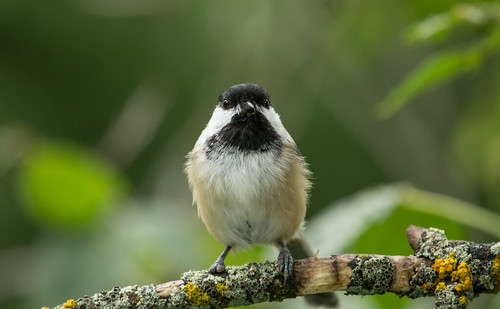 |
| My little chickadee |
I haven’t seen an adult male Ruby-throated Hummingbird in a little over a week now—the only ones remaining are adult females and, mostly, young of the year. A couple of them stopped at my window feeder while I was working away. I’ve been losing some of my hearing, but I always seem to be able to pick up the humming sound their wings make—I’ve even heard it when the windows were closed, but on September 1 they were wide open.
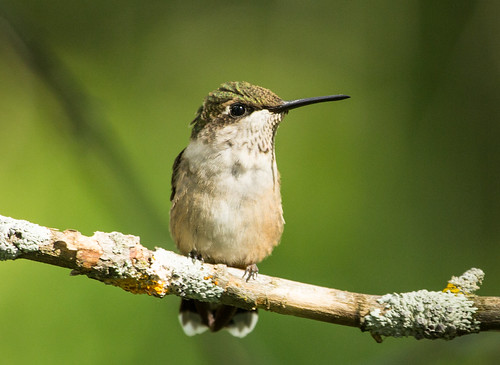 |
| My cooperative Ruby-throated Hummingbird (immature male) |
One immature male drank his fill and then perched in the box elder for a few minutes. I like to hold the button down on my camera to shoot a lot of photos at once—with hummers, you can get a lot of completely different shots of the same bird on the same perch, because even when they’re resting they’re looking every which way and preening and yawning and stretching.
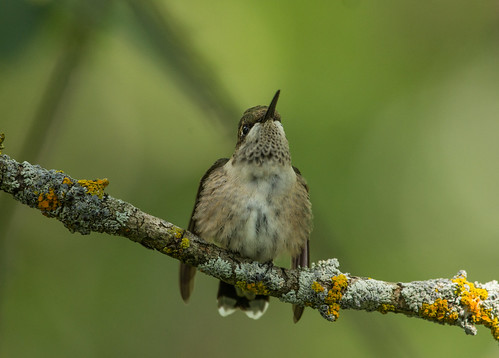 |
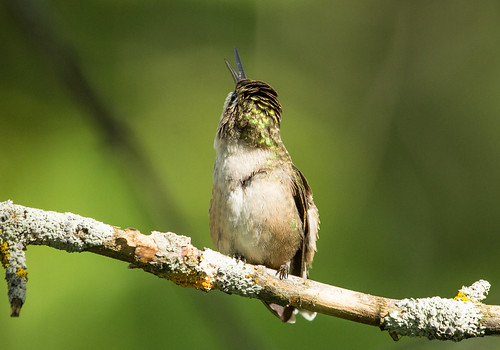 |
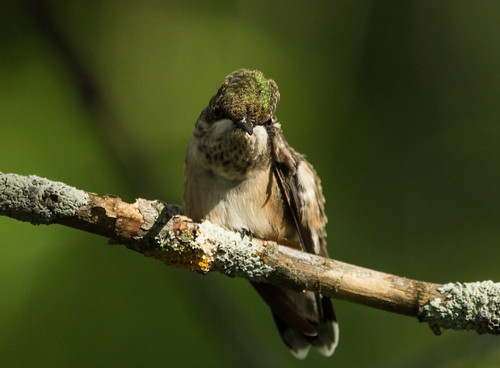 |
My camera shoots several photos per second in the highest resolution setting, the only limitation being how fast the photos can be written to the memory card. I have a very high-speed card, but when the bird stays there being photogenic for more than 7 or 8 shots, the camera shutter stops for a few seconds. I got 54 shots of the bird all in the same spot, and just about all of them are focused, interesting, and different, but I also missed some really good shots during the camera’s down time. That used to fill me with frustration, but now I usually take it right in stride. That hummingbird moved on after its meal and rest stop, but another hummingbird will pass through, and another. I love being outside to see as many birds as I can during migration, but when I can’t, I can at least count on my trusty box elder to draw in a bunch of really cool birds.
eBird list for the day:
Rock Pigeon (Feral Pigeon) (Columba livia (Feral Pigeon)) 2
Ruby-throated Hummingbird (Archilochus colubris) 2
Hairy Woodpecker (Picoides villosus) 1
Northern Flicker (Yellow-shafted) (Colaptes auratus auratus/luteus) 2
Pileated Woodpecker (Dryocopus pileatus) 1
Least Flycatcher (Empidonax minimus) 1
Great Crested Flycatcher (Myiarchus crinitus) 1
Red-eyed Vireo (Vireo olivaceus) 3
Blue Jay (Cyanocitta cristata) 7
American Crow (Corvus brachyrhynchos) 1
Black-capped Chickadee (Poecile atricapillus) 8
Red-breasted Nuthatch (Sitta canadensis) 2
White-breasted Nuthatch (Sitta carolinensis) 1
House Wren (Troglodytes aedon) 2
American Robin (Turdus migratorius) 2
Black-and-white Warbler (Mniotilta varia) 2
Tennessee Warbler (Oreothlypis peregrina) 1
Nashville Warbler (Oreothlypis ruficapilla) 3
American Redstart (Setophaga ruticilla) 8
Northern Parula (Setophaga americana) 1
Magnolia Warbler (Setophaga magnolia) 3
Chestnut-sided Warbler (Setophaga pensylvanica) 2
Chipping Sparrow (Spizella passerina) 3
White-throated Sparrow (Zonotrichia albicollis) 1
Northern Cardinal (Cardinalis cardinalis) 1
American Goldfinch (Spinus tristis) 3